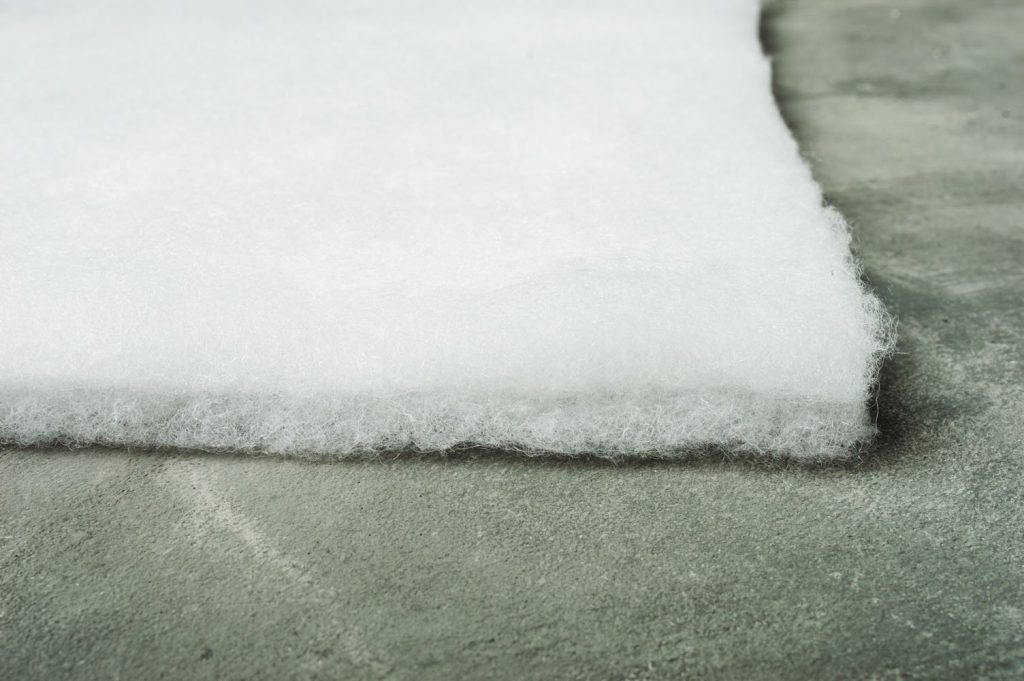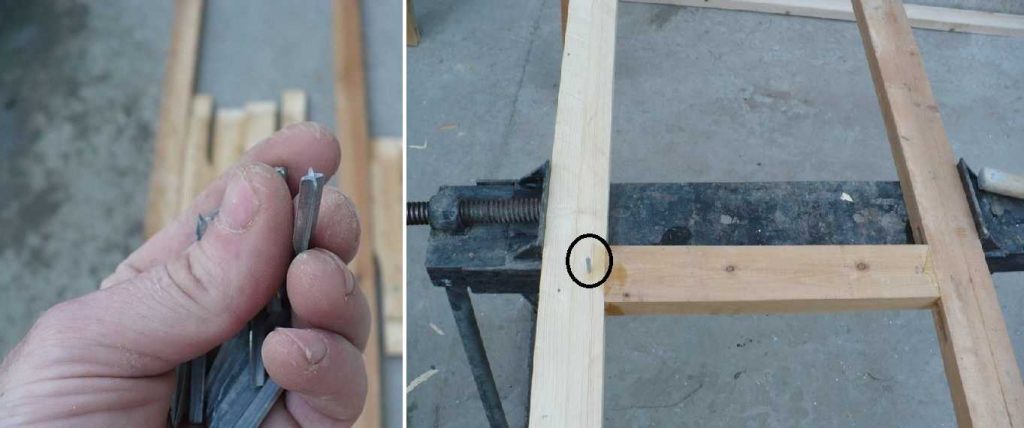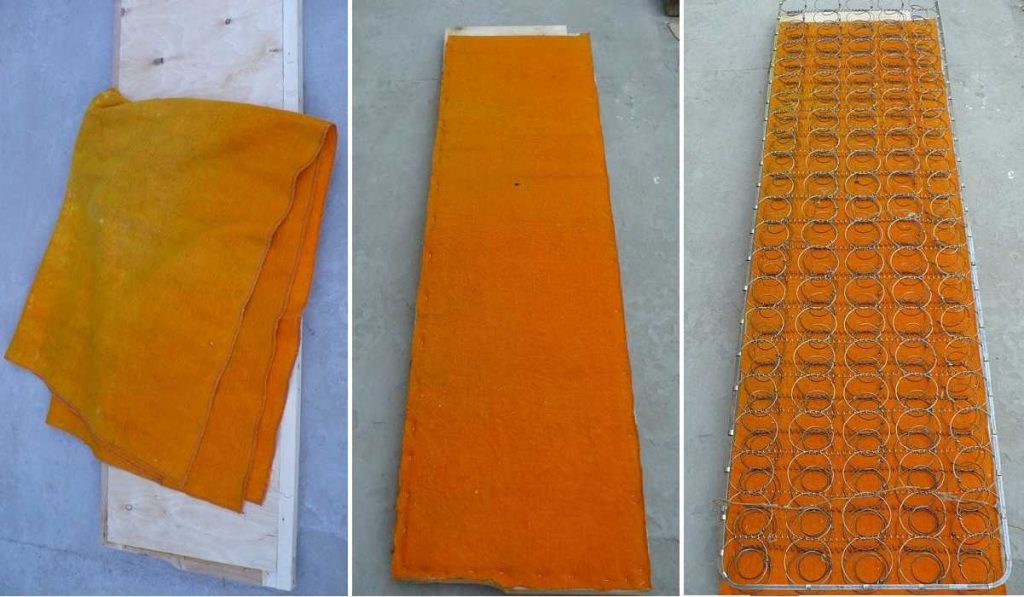DIY step-by-step instructions for hauling a sofa

When upholstered furniture wears out and loses its attractive appearance, it is customary to believe that the owner has only two options - replace it with a new one or order restoration in a workshop. But, as practice shows, the constriction of the sofa can be performed independently. You will need to prepare a set of tools, calculate the amount of filler and material for cladding, create a pattern, remove all worn out elements, and perform a number of other important actions. The procedure is quite complex and time-consuming, but with a great desire, it is quite feasible at home. Independent hauling of upholstered furniture will not only save time on finding a specialist and transporting a sofa, but also save the family budget.
Content
Materials and Tools
Before proceeding to hauling furniture with your own hands, you need to figure out what this procedure is like, to stock up on the tools and materials that will be required during the work. In addition to upholstery fabric, you will need a filler, accessories, piping for masking seams, sewing pins, decorative buttons or a zipper.
First of all, when hauling an old sofa, you need to decide on the filler, since the degree of comfort during sitting depends on it. With independent restoration, the following types of packing are most often used:
- Polyurethane foam is a synthetic highly porous material for the constriction of a sofa, which is produced by combining polymers. PPU is one of the most popular types of fillers, as it is characterized by high density and does not deform over time. For home furniture, a base with an indicator of 30 to 40 kg per m2 is used - the higher the density, the more durable the product will be.
- A synthetic winterizer is the most common and affordable option. It is made from polyester fibers. It is not used as a full-fledged independent filler, it is recommended to combine it with polyurethane foam - so the product will turn out to be more comfortable in use and wear-resistant.
- Felt and padded jacket are natural and environmentally friendly materials, characterized by high density. They are made in the form of panels of various thicknesses and sizes. For stuffing the sofa, sheets from 8 to 12 cm thick are mainly used.
The second most important step will be the choice of fabric that will be used for lining. Upholstering of upholstered furniture at home is traditionally carried out using the following coatings:
- flock - a dense and durable canvas, does not stretch, does not wear out over time;
- eco-leather - a high-quality material that does not interfere with air circulation and has good performance, but hauling a sofa with leather is expensive, so synthetic analogues are often used;
- shenill - a fabric-based canvas, recommended for corner models, not afraid of wet cleaning and will last for many years;
- jacquard - an expensive fabric, beautiful and durable;
- tapestry - classic upholstery, characterized by practicality and wear resistance;
- velor - a budget option with a velvety surface that requires careful handling;
- leather cloth - an exquisite coating that needs regular care.
Upholstery of sofas can be made of natural or artificial raw materials. As practice shows, synthetics are more durable and durable, easier to clean, and do not fade longer. The most practical option is a dense fabric with a low pile, since it will get less dirty and will not cause difficulties in care.
The third step is to prepare the tools. In addition, hauling and lining upholstered furniture with your own hands may require the use of sewing accessories. To carry out the work you will need:
- an anti-stapler to remove old staples (as an alternative, you can use a flat screwdriver);
- construction stapler;
- nippers;
- drill;
- spanners;
- scissors for cutting;
- strong threads;
- sewing machine.
Also, a glue gun can be useful in fixing the decor, but it is only necessary if it is planned to decorate the sofa with complex additional elements, for example, applique.
Preparatory stage
The banner of the leather upholstery of the sofa, just like woven, always starts with the preparatory work. The first step is to remove all worn out items. The procedure is carried out in the following order:
- Disassembly. Previously, all pillows, ottomans, rollers are removed from the sofa. Further, the furniture is disassembled, for this it is necessary to disconnect the sidewalls and remove the overhead elements. Fasteners are recommended to be folded in a bag or box, as they will be needed during subsequent assembly.
- Removing spoiled upholstery. It is better to remove the material with an anti-stapler or remove the staples with a flat screwdriver. The work must be carried out very carefully, since the old fabric will be used as a pattern for the new cover, it is especially important to maintain the integrity of the canvas when hauling the corner sofa.
- Inspection and repair of the mechanism. It is necessary to clean the frame of debris and dust, then remove the old foam. Metal springs, nets, stretch marks must be inspected for defects, and if detected, they must be eliminated.
- Strengthening the frame. It is necessary to tighten all the screws, fix the joints of the parts, glue the wooden joints if necessary.
- Calculation of footage of fabric for a new cover. At this stage, you will need to evaluate how much material is required to haul a leather sofa or textile model upholstered. You need to navigate by the size of the old casing and the filler that has fallen into disrepair.
- Open the cover. To create a pattern on the acquired fabric, you need to impose the removed upholstery and secure it with sewing pins. Then, with chalk or soap, circle the contour and cut out the details with sharp scissors.
At the edges of the new blank for upholstery you need to leave an allowance of 2-3 cm on each side. It should be the same along the entire perimeter of the material - even a few millimeters of error can distort the fabric.
Step by step instructions for hauling a sofa
After preparing the pattern and all the necessary tools, you can proceed directly to the constriction of the corner sofa or the classic direct model. The restoration process begins with the replacement of damaged foam with a new one.In most cases, pre-cut filler is laid on a wooden frame. If the padding is not a solid block, but consists of a number of elements, they must be tightly joined, otherwise, a few months after dragging the corner sofa into the seat, dents may appear that will cause discomfort during sleep.
It is recommended to fix the parts together and fasten to the frame using a construction stapler. It is important to consider that the filler layer should be sufficiently thick, as it will soon become somewhat denser. In order to facilitate your work as much as possible, it is recommended to study in advance how to drag the upholstery on the furniture yourself, and strictly adhere to the recommendations.
Direct
A step-by-step algorithm that tells you how to correctly haul a sofa of a direct model:
- To lay a dense natural fabric directly on the frame or the spring block, if it is provided for in a particular product - it will help to avoid the rapid compression of the packing.
- On each side, bend the material inward and attach to the edges of the springs or the frame with nylon threads, which are characterized by increased strength and do not become thinner with time.
- Firmly lay a layer of new filler on top.
- In order to make the construction as complete as possible and not “loose”, it is recommended to attach the canvas on top of the packing. It can be reliably fixed using a construction stapler.
- At the end, you need to cover the sofa with new material. This step requires accuracy, otherwise the fabric may tear.
After performing this action, the work can be considered completed.
The corner
It is necessary to carry out a constriction of an angular sofa step by step as such models have a difficult configuration. In addition, it is worth considering that the work will take more time. In general, the procedure is carried out in the same way as the replacement of the filler in a classic direct sofa:
- First you need to remove the old unsuitable foam, remove excess elements from the frame, clean it of debris. After you can start laying new filler.
- Unlike a direct sofa, in corner models foam rubber will have to be laid in two compartments. The filler should be inserted tightly, it is desirable to fasten the elements together using a stapler. In addition to the basic fasteners, it is fixed with a strong cloth, only after that the sofa is finished upholstered with the selected fabric.
Also at this stage, the filling of the back and armrests is changing, therefore, if you plan to update these elements, you need to purchase a sufficient amount of raw materials in advance.
After the hauling, the final stage follows - replacing the skin of the sofa with your own hands. Although this work seems time-consuming and lengthy, if you know the algorithm of actions, there will be no problems, and it will take no more than a day to update the furniture. Professionals note that the most difficult point is to correctly calculate how much fabric will be needed on the corner sofa. In order not to do the calculations yourself, it’s worth using the removed old upholstery, which will become the best pattern. New material must be purchased with stock.
From the prepared parts using a sewing machine you need to make a cover, then gently pull it on the main elements. It is most convenient to lay the stitched case on the floor and lay the parts of the sofa in it. At this stage, it is important to ensure that the fabric is stretched evenly and does not wrinkle. The cover is attached to furniture elements using a construction stapler, it is advisable to use staples with thick backs, since they will not cut through the fabric due to tension. Further, in a similar manner, it is necessary to restore the back and sides of the sofa.When the work is completed, the product is assembled. To facilitate the task, you can pre-watch several videos on how to gradually fit the sofa with your own hands.
In order for the upholstery to be firmly attached to the parts of the sofa, it is recommended that the braces be fixed at a distance of no more than 4 cm from each other. The more often they are located, the smoother the upholstery will be. It is important to uniformly, while moderately strongly, pull the fabric with fasteners.
Choosing the Right Design and Decor
Making a decision on independent restoration of furniture and having studied the information on how to fit a sofa with fabric, it will not be superfluous to also decide on the design. The shade of the upholstery material is selected taking into account the color scheme of the interior. For modern trends (loft, hi-tech, modern), designers recommend using monophonic fabric of basic colors: cream, blue, brown, burgundy, black. If the room is decorated in the spirit of Provence, furniture with floral or floral prints will be more appropriate. In addition, this style is characterized by the use of exclusively pastel shades. In interiors such as baroque or avant-garde, you can drag the sofa with the help of a material with a complex, even slightly lurid pattern.
Determining how to replace the upholstery of the sofa, you need to pay special attention to the decoration of pillows and rollers. Puffs embroidered with beads or decorated with applique look very interesting. Another modern design decision is to decorate elements using the patchwork technique, when rags of the same size fabric are sewn together. Also, the sofa can be decorated with a fur coverlet or decorative sheepskin - such a solution will be appreciated by fans of rich interiors in the spirit of the Middle Ages.
The nuances of leather furniture
With questions about how to sheathe the sofa yourself with a cloth, difficulties should not arise. The situation is a little different if you plan to work with the skin. In this case, the restoration and hauling of the sofa are carried out taking into account a number of rules:
- When working with leather, pins should never be used, since they can leave holes on the surface of the material. Adhesive tape is preferred for bonding the workpiece elements.
- So that coarse seams do not form when flashing the cover, it is recommended that they be pressed through gauze.
- In order for the stitched leather product to last for a long time, it is not recommended to drive the staples into the material itself, it is best to fasten them to a pad of felt or another dense surface.
The independent hauling of a leather sofa, as well as the restoration of upholstered furniture upholstered in fabric, is a fascinating activity that will help radically transform the product without any special financial costs. The most complex process in all work is the manufacture and tension of the cover, all other steps should not cause difficulties. The main thing is to be patient and adhere to the action plan, then hauling the leather upholstery on the sofa will take place properly, and the fabricated cover will last a long time, while maintaining presentability.
Video



































